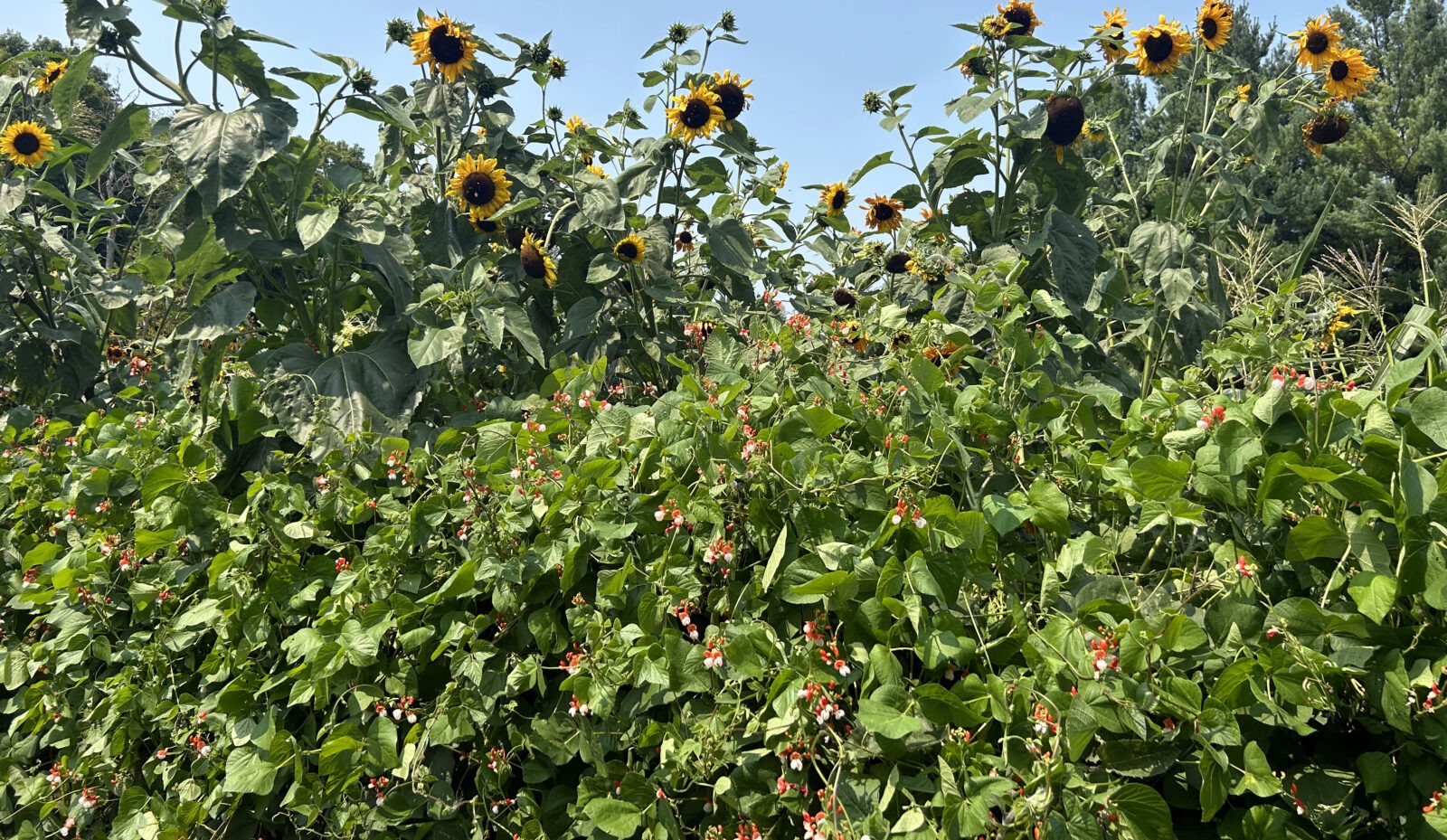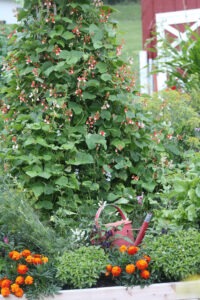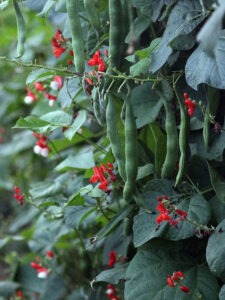Quintessentially British: The Unjustifiably Shunned Runner Bean

In the world of beans, the runner bean, Phaseolus coccineus, is a bit of an anomaly. Unlike common beans, Phaseolus vulgaris, runner beans climb in a clockwise direction, are perennials in frost-free zones, and have large, showy flowers that are nectaries for hummingbirds. Additionally, runner beans are originally from the mountains of Central America and adapted to cool weather.
In the United States, runner beans are undervalued as an edible crop and usually grown as ornamentals for their large, showy, often scarlet-colored flowers. American horticulturalist Fearing Burr recognized their eating qualities in his 1863 book Field and Garden Vegetables of North America, stating “its value as an esculent has not been generally appreciated.” This remains true today.

But in Great Britain and other European countries like Germany and Holland, runner beans are far more popular, and their culinary merits as a snap bean are well known. The dry beans are commonly eaten in areas of eastern Europe, especially white-seeded and white-flowered varieties. According to the Garden Seed Inventory (7th edition), 61 seed companies in the United States sold runner beans in 2015, though most (41) only offered a single variety, usually ‘Scarlet Runner.’ In contrast, the British seed company Thompson and Morgan lists 18 different varieties in its 2017 catalog, and Sutton’s Seeds offers 16 varieties. Additionally, the Royal Horticultural Society has presented its Garden of Merit award to 20 different varieties of runner beans since 1932, while not a single runner bean variety in the United States has been an All-America Selection.
Adaptation to cool weather makes runner beans well suited to Great Britain’s climate and has perhaps contributed to their lack of general popularity across the United States. Temperatures above 85 degrees F prevent fertilization of ovules and thus inhibit fruit set, making them tough to grow outside the Pacific Northwest and northeastern United States. In addition, runner beans require pollinators, especially bees, to set fruit. Other areas with cooler microclimates, such as the Great Lakes region, would be conducive to growing runner beans.

A standout variety from the Seed Savers Exchange collection is ‘Kelvedon Marvel,’ which was grown last year for evaluation at Heritage Farm. This variety was donated by John Withee and the Wanigan Associates, but originated with the British seed company Thompson and Morgan. Participants in the Seed Exchange have also consistently shared this variety over the last 20 years, and it’s no wonder. We were very impressed with its flavor, describing it as sweet, fruity, and apple- or grape-like. It is earlier maturing than other varieties and has beautiful scarlet flowers and purple-and-black mottled seeds. Overall yields of the clustered, relatively short pods were good too. During the dry legume tasting at the Seed Savers Exchange Winter on the Farm event, ‘Kelvedon Marvel’ was a top-two crowd favorite for taste among 11 legumes (the other top favorite was another runner bean variety named ‘Black Coat’). In general, the snap beans are larger, coarser in texture, and more strongly flavored than common beans, and the dry beans taste similar to kidney beans.
Other popular varieties of runner beans include ‘Painted Lady Improved,’ ‘Scarlet Runner,’ and ‘Sunset Runner.’
Part of our work at Seed Savers Exchange includes growing out and documenting varieties from our collection. These evaluations help us learn more about the varieties and expand our documentation of varieties and whole crop types. Some of these evaluated varieties go on to be offered in our catalog, while others are made available in the Exchange online seed swap, open to all.